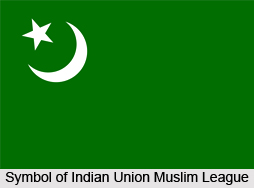 Indian Union Muslim League is regarded as a Muslim nationalist political party; it is mainly based in northern Kerala. The Indian Union Muslim League after its registration at the Electoral Commission by a splinter-group of the party, was named the `Muslim League Kerala State Committee` to start contesting elections.
Indian Union Muslim League is regarded as a Muslim nationalist political party; it is mainly based in northern Kerala. The Indian Union Muslim League after its registration at the Electoral Commission by a splinter-group of the party, was named the `Muslim League Kerala State Committee` to start contesting elections.
The IUML or the `Muslim League Kerala State Committee` has its roots in the Muslim League of Jinnah; it was founded on March 10, 1948. The party claims to be the political organisation of all Indian Muslims. In 1959, the Indian Union Muslim League participated in the eviction of the first communist government in Kerala. In 1960, the party took part in the establishment of a coalition government in the state. The coalition government comprised the Indian National Congress, Praja Socialist Party and the Indian Union Muslim League. In 1967, the party got into a united front led by the Communist Party of India (Marxist). Communist Party of India, Revolutionary Socialist Party, Karshaka Thozhilali Party (Peasants and Workers Party), Kerala Socialist Party and Samyukta Socialist Party were the other parties in the forefront.
The Indian Union Muslim League had two ministers in the state government. The party left the CPI(M)-led government in 1969 and concentrated in the formation of a new government, led by Communist Party of India leader Achutha Menon as Chief Minister, together with CPI, RSP, KSP and Kerala Congress. Achyutha Menon was elected Chief Minister after the 1970 elections for the second time. Indian National Congress, IUML, RSP and PSP were the members of the governing coalition.
When the two political fronts- United Democratic Front and Left Democratic Front crystallised ahead of the 1980 elections, two different sections of the Indian Union Muslim League landed up in opposite camps. A splinter sect, the All India Muslim League joined LDF and the Indian Union Muslim League joined UDF. The two groups reunified in 1985 under the name IUML and as members of UDF.
The youth wing of the party is known as Muslim Youth League and the students wing is known as Muslim Students Federation. The IUML also has a women`s political wing- Muslim Women`s League. The party has a separate trade union organisation in Kerala namely Thozhilali Union (S.T.U., Independent Workers Union), and a peasants union- Swathanthra Karshaka Sangam (Independent Peasants Union) and KMCC for Gulf employees.
The Indian Union Muslim League today is part of the United Progressive Alliance central government. E. Ahmed, the Minister of State for External Affairs is the party Secretary. He is the first central minister in the history of the party. They had 4 ministers in Kerala in the recent UDF government. E. Ahmed is also the national General Secretary of the party. The party has also some influence in Tamil Nadu apart from Kerala.
IUML is a member of the Democratic Progressive Alliance. The Indian Union Muslim League won two Parliament seats in the Lok Sabha elections of 2004. E. Ahmed from Kerala and K.M. Kader Mohideen from Tamil Nadu were elected as a Dravida Munnetra Kazhagam candidate from Vellore.






